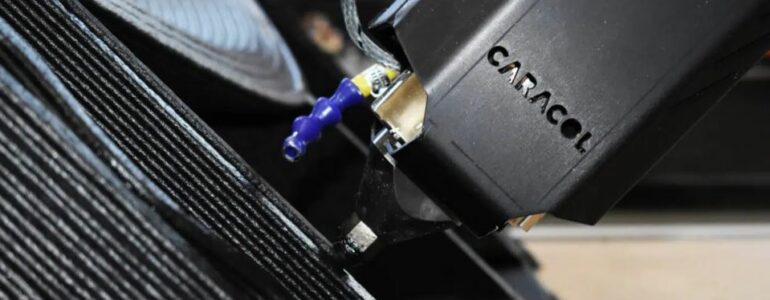18/01/24

As Large Format Additive Manufacturing (LFAM) technologies’ adoption increases, one of the application fields that is leading this growth is tooling. Within this field, LFAM solutions have proved to be a valuable way to provide manufacturing supply chains in advanced sectors, such as aerospace, automotive, and railways, with efficiencies in terms of process, time, and costs.
Caracol began exploring tooling, jigs, and fixtures several years ago, working side by side with leading international players within their industries. Through collaboration with partners, the company has managed to combine its expertise in additive technology and engineering, with client’s know-how on applications, needs, requirements, and existing pain points. This cooperative approach is leading to the delivery of cutting-edge innovation and effective solutions.
Working on its LFAM platform Heron AM with an application-first approach, the company refined its system for it to effectively manufacture parts in accordance with the highest quality and performance standards – qualifying its production process with the AS/EN 9100 certification.
While performance criteria such as dimensional tolerances of 0.1 mm or surface roughness of 1.6 μm can be met by combining additive manufacturing with CNC and post-processing, a hurdle to the widespread adoption of LFAM is ensuring composites can truly become a metal replacement solution across applications. Today a lot of effort is being put in by R&D departments to test and characterize new composite blends for processes like Caracol’s. The company has been working with glass or carbon fiber composites with thermoplastic matrixes, such as:
When it comes to specific applications the range of tooling that can be manufactured with additive technologies is very broad. Since beginning its work in the field, Caracol has had the opportunity to work on several parts, including:
Certain characteristics of additive manufacturing processes still require a lot of studying both from AM technology providers and end-users. For example, a key aspect is being able to anticipate and cope with anisotropic coefficient of thermal expansion (CTE) mismatches or finding ways to reduce warping of parts that are built to undergo thermal or mechanical stresses.
So, what has triggered consolidated supply chains in advanced industrial sectors to explore additive manufacturing as an alternative to traditional solutions? While LFAM systems like Heron AM are very new and keep evolving continuously, the benefits these processes provide are extremely evident and have led to an exponential acceleration in the technologies’ implementation.
One of the keys has been the reduction of lead time in production of these parts. Time saving occurs both because of the ability to skip the multi-step manufacturing process, directly printing near net shapes in one or two days to then machine and finish the part. Beyond the build time itself being much faster, parts can be produced in a single block, avoiding assemblies and lengthy manual labor usually required, and saving time up to 30 to 50%.
Additive manufacturing also enables engineers to rethink how parts are made, allowing for optimized designs that can reduce weight or introduce ergonomic features that improve part characteristics for handling, work operations, and logistics within clients’ factory shop floors (e.g., easier movement with pallet trucks, ability to store parts in vertical storage units). This agility can also be found in the flexible manufacturing process – allowing more time to fix the geometry and details, for example by printing thicker face sheets and iterating the machining step in case of unexpected surface modifications.
Furthermore, AM can provide several benefits in terms of sustainability. Starting from a drastic reduction in the quantity of material used for the parts itself, the overall savings in terms of material waste can go up to 80-90%, as milling is required only on the surface sheet instead of on full blocks of material. Tools can be produced on demand and on-site with digital inventories of parts, eliminating the need to storage of models as well as reducing the impact of logistics for global companies. Thanks to the use of thermoplastics, there is also the potential of finally seeing recycled materials used for some of these parts, introducing virtuous circular economy cycles in advanced industrial processes.
Ultimately, as a result of aspects mentioned above such as shorter lead times and reduced raw material used, savings in terms of costs are on average around 40 to 60% compared to traditional processes. LFAM technologies for tooling applications have only began showing what their potential is, and we can expect this segment to grow and innovate considerably in the years ahead.